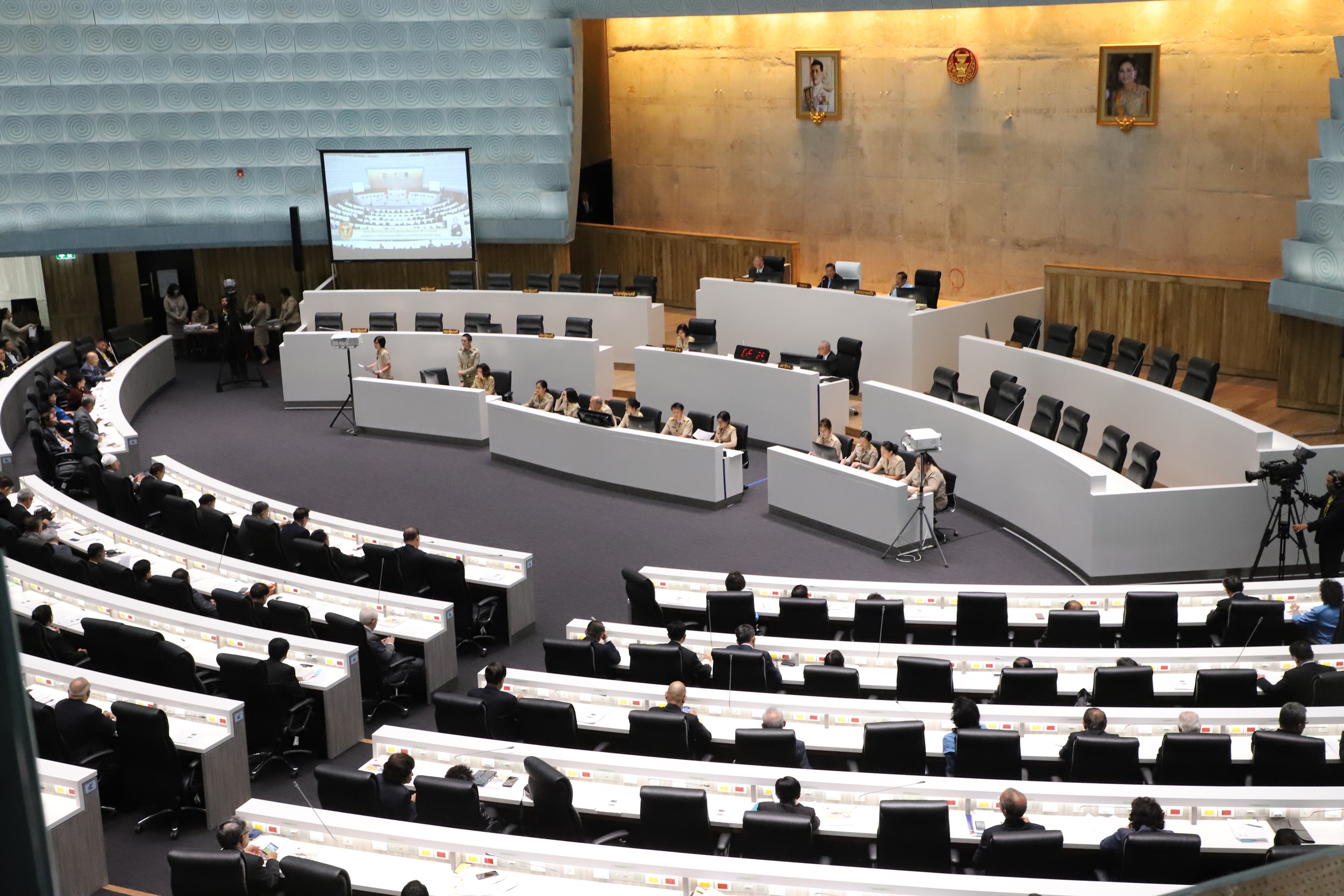|
Parliamentary Committees Of Thailand
The parliamentary committees of Thailand are committees of the National Assembly of Thailand. Each consists of a small number of Members of Parliament from the House of Representatives, or senators from the Senate of Thailand, appointed to deal with particular areas or issues. House of Representatives Standing committees Standing committees in the House of Representatives are designed to oversee the work of departments and agencies, are permanent committees established under the standing rules of each house and specialize in exclusive subject areas. * Administration * Agriculture and Cooperatives * The Armed Forces * Budgeting Study and Budget Administration Follow up * Children, Youth, Women, Older Persons, Persons with Disabilities, Ethnic Groups, and LGBTs * Commerce and Intellectual Property * Communications, Telecommunications, and Digital Economy and Society * Consumer Protection * Corruption Prevention and Suppression * Decentralization, Local Administration and Special For ... [...More Info...] [...Related Items...] OR: [Wikipedia] [Google] [Baidu] |
Committees
A committee or commission is a body of one or more persons subordinate to a deliberative assembly or other form of organization. A committee may not itself be considered to be a form of assembly or a decision-making body. Usually, an assembly or organization sends matters to a committee as a way to explore them more fully than would be possible if the whole assembly or organization were considering them. Committees may have different functions and their types of work differ depending on the type of organization and its needs. A member of a legislature may be delegated a committee assignment, which gives them the right to serve on a certain committee. Purpose A deliberative assembly or other organization may form a committee (or "commission") consisting of one or more persons to assist with the work of the assembly. For larger organizations, much work is done in committees. They can be a way to formally draw together people of relevant expertise from different parts of an organi ... [...More Info...] [...Related Items...] OR: [Wikipedia] [Google] [Baidu] |
National Assembly Of Thailand
The Parliament of Thailand ( Abrv: NAT; , , ) is the bicameral legislative branch of the government of Thailand. It convenes in the Sappaya-Sapasathan, Dusit District, Bangkok. The Parliament was established in 1932 after the adoption of Thailand's first constitution, which transformed Thailand from an absolute monarchy to a constitutional monarchy. During the 2013 political crisis, the House of Representatives was dissolved by Prime Minister Yingluck Shinawatra who called for election on 2 February 2014 until it was nullified by the Constitutional Court. After the 2014 ''coup d'état'', the Parliament of Thailand was replaced by the military-backed, unicameral National Legislative Assembly according to the 2014 constitution. After the promulgation of the 2017 Constitution in April 2017, the Parliament was reestablished but the constitution allowed the military National Legislative Assembly to temporarily remain in place until the Parliament of Thailand was formed fol ... [...More Info...] [...Related Items...] OR: [Wikipedia] [Google] [Baidu] |
House Of Representatives (Thailand)
The House of Representatives (, , ) is the lower house of the National Assembly of Thailand, the legislative branch of the Thai government. The system of government of Thailand is that of a constitutional monarchy and a parliamentary democracy. The system of the Thai legislative branch is modelled after the Westminster system. The House of Representatives has 500 members, of which 400 are elected through single member constituency elections, while the other 100 are chosen through party lists parallel voting. The House of Representatives was temporarily abolished as a result of the 2014 Thai coup d'état and replaced with the unicameral National Legislative Assembly, a body of 250 members, selected by the National Council for Peace and Order. After the 2017 constitution was promulgated in April 2017, the House of Representatives was reestablished. Role Bill consideration The Cabinet, no less than 20 members of parliament, or 10,000 eligible voters through a petition ma ... [...More Info...] [...Related Items...] OR: [Wikipedia] [Google] [Baidu] |
Senate Of Thailand
The Senate of Thailand is the upper house of the National Assembly of Thailand, Thailand's legislative branch. In accordance with the 2017 constitution of Thailand, the Senate is a non-partisan legislative chamber, composed of 200 members. Senators are indirectly voted by the candidates from 20 professional and social groups and serve five year terms. In practice, the chamber is split into factions with political ties. Thailand has not always had a senate. Some constitutions provided for senate, with senators being fully appointed, half-elected, and fully elected. Most recently, between 2014 and 2019, the senate was abolished and replaced by unicameral National Legislative Assembly. History The idea of bicameralism first permeated Thai politics with the Constitution of 1946, when the government of Pridi Banomyong introduced a Senate modelled on the British House of Lords. For the first time, an upper house came into existence in Thailand. The Senate was to be fully elected, ... [...More Info...] [...Related Items...] OR: [Wikipedia] [Google] [Baidu] |
Parliament Of Thailand
The Parliament of Thailand ( Abrv: NAT; , , ) is the bicameral legislative branch of the government of Thailand. It convenes in the Sappaya-Sapasathan, Dusit District, Bangkok. The Parliament was established in 1932 after the adoption of Thailand's first constitution, which transformed Thailand from an absolute monarchy to a constitutional monarchy. During the 2013 political crisis, the House of Representatives was dissolved by Prime Minister Yingluck Shinawatra who called for election on 2 February 2014 until it was nullified by the Constitutional Court. After the 2014 ''coup d'état'', the Parliament of Thailand was replaced by the military-backed, unicameral National Legislative Assembly according to the 2014 constitution. After the promulgation of the 2017 Constitution in April 2017, the Parliament was reestablished but the constitution allowed the military National Legislative Assembly to temporarily remain in place until the Parliament of Thailand was formed foll ... [...More Info...] [...Related Items...] OR: [Wikipedia] [Google] [Baidu] |




